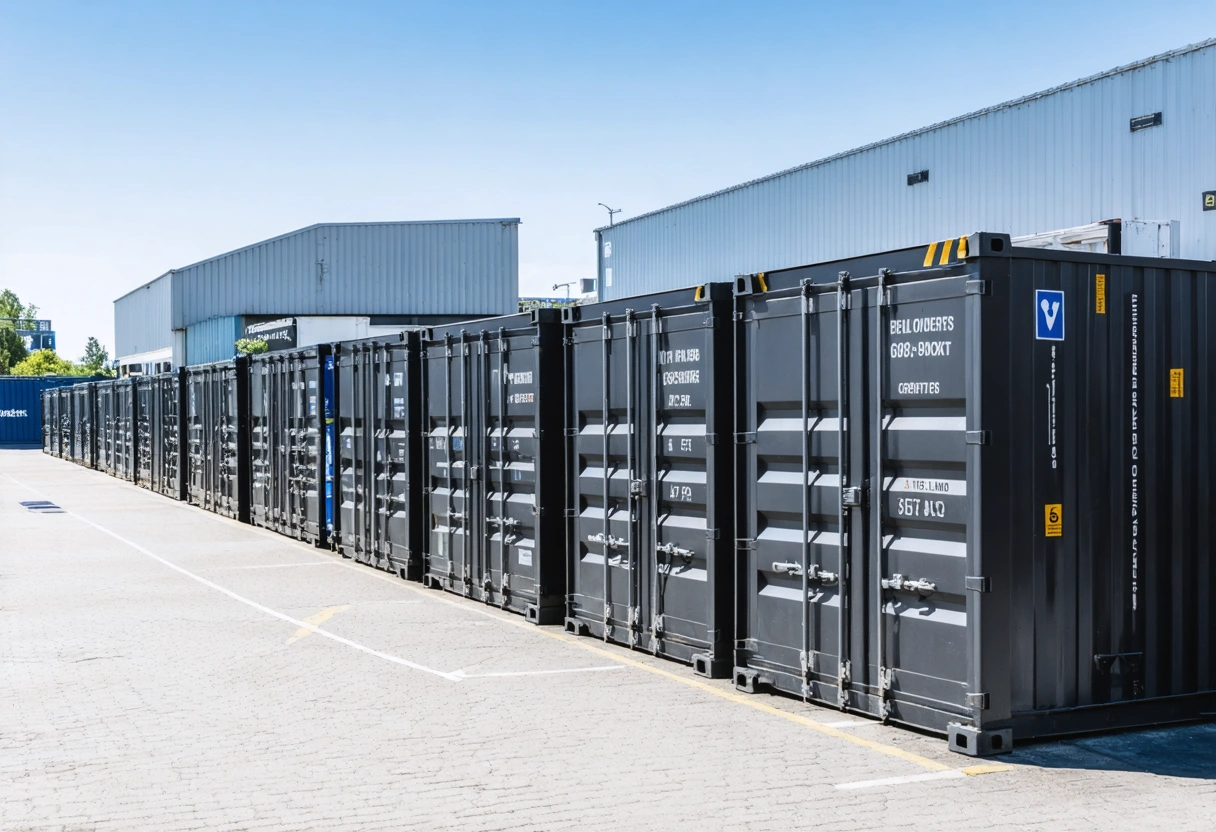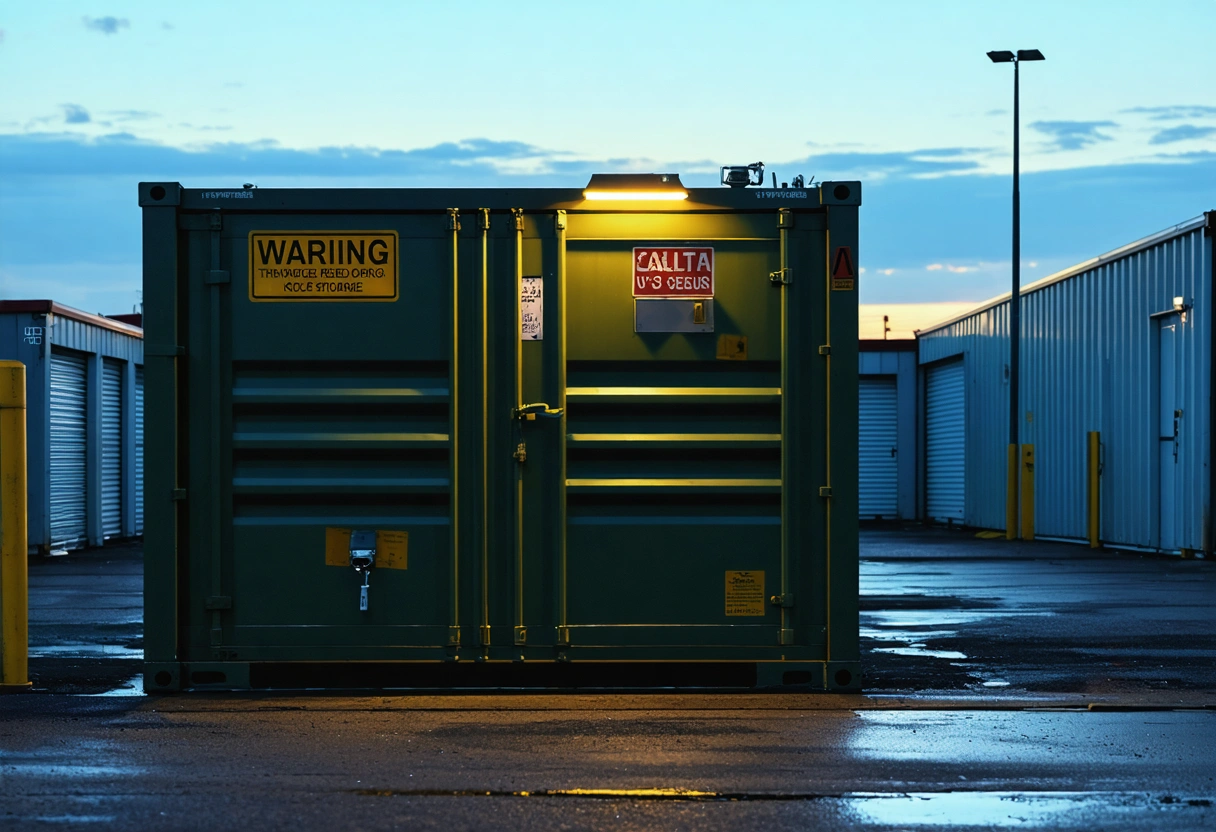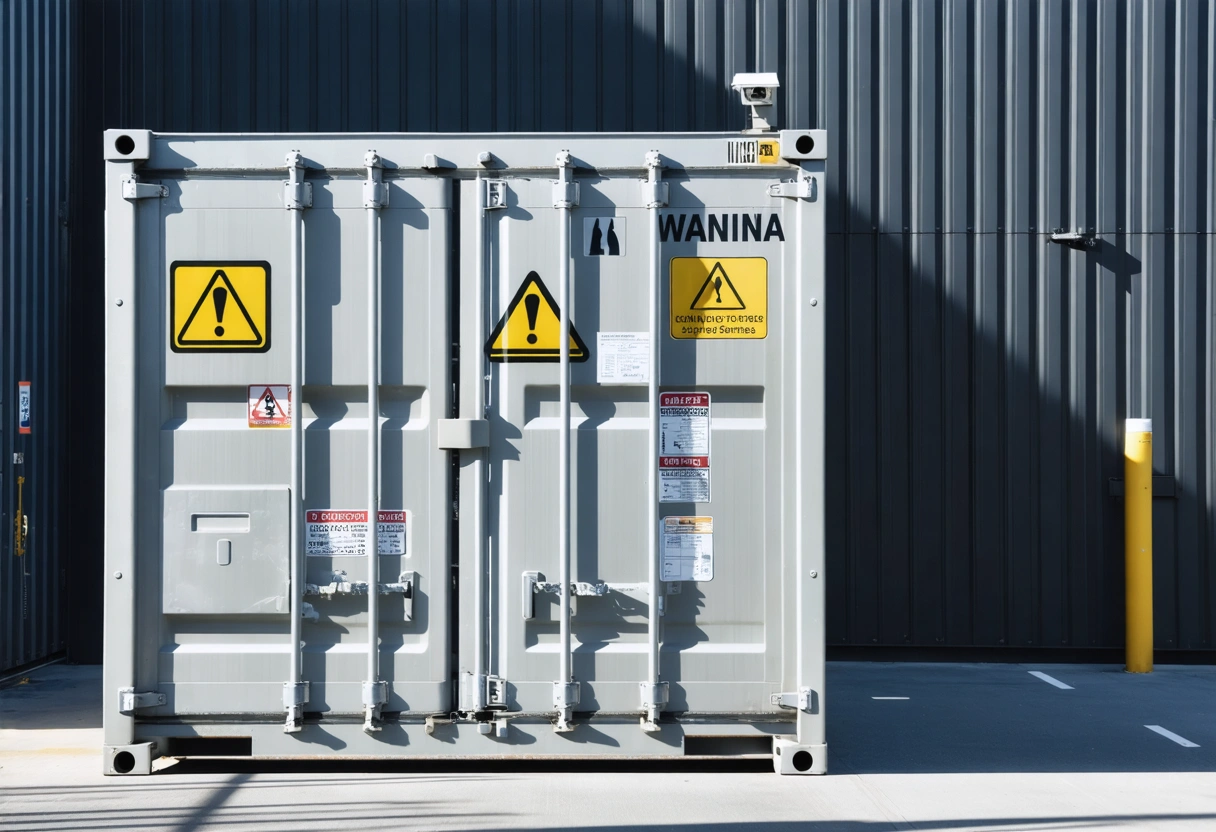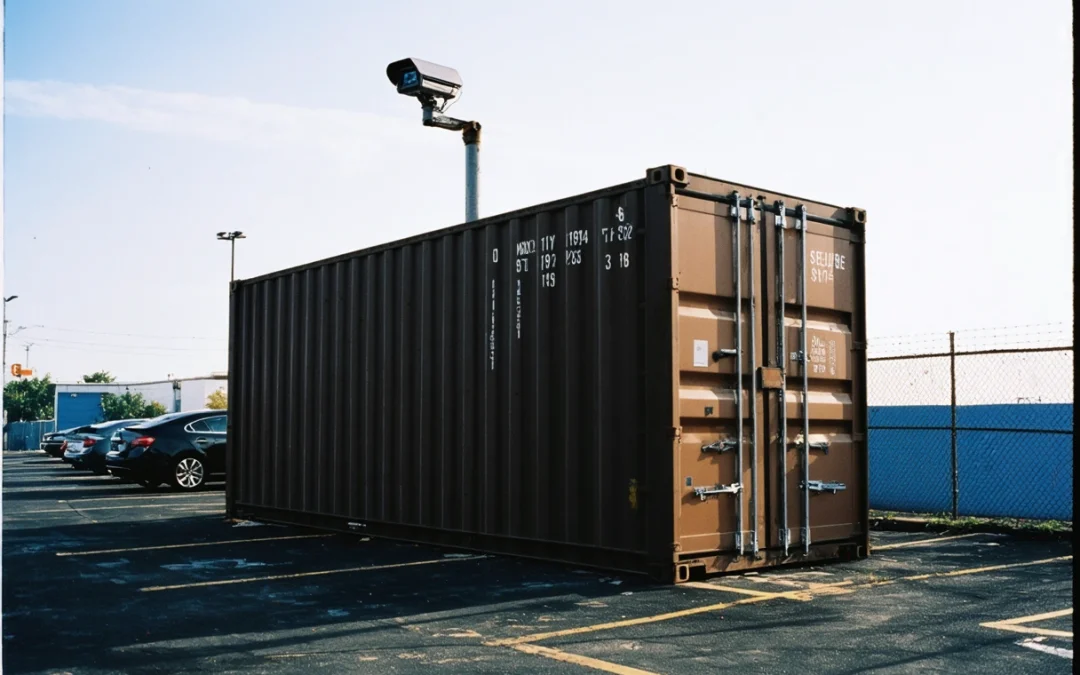Protecting Your Business Assets: The Essential Guide to Secure On-Site Storage
Every successful business, regardless of size or sector, depends on the safety and security of its assets. From valuable inventory and sensitive documents to expensive equipment and proprietary information, your assets are the foundation of your operations and growth. As companies navigate an increasingly complex world of security threats and regulatory requirements, secure on-site storage has never been more critical. In this comprehensive guide, we’ll explore the best practices, strategies, and technologies you can implement to safeguard your business assets through secure on-site storage solutions.
Whether you operate a local retail store, a bustling warehouse, or a dynamic office environment, understanding the nuances of asset protection is essential. This guide delves into the principles of secure storage, discusses common threats, highlights advanced security technologies, and offers actionable steps you can take to ensure your assets remain protected on your premises.
Why Asset Protection Matters for Businesses
Asset protection goes beyond simple theft prevention. It encompasses everything from minimizing loss due to disasters and mishandling to complying with industry regulations. Unprotected assets can lead to devastating financial losses, legal liabilities, reputational damage, and operational disruption.
For instance, a single incident of equipment theft or data loss can cripple productivity and shake customer confidence. According to the Federal Bureau of Investigation’s white-collar crime resources, businesses lose billions annually to internal and external threats. This underscores the importance of having robust on-site storage solutions that are not only secure but also tailored to your company’s unique needs.
Understanding On-Site Storage: Types and Benefits
On-site storage refers to any facility or system that allows businesses to keep physical or digital assets securely within their own premises. Unlike offsite or cloud-based options, on-site storage gives companies greater control over their assets, immediate access, and often, enhanced customization for security protocols.
The benefits of on-site storage are substantial. It enables faster retrieval of assets, reduces dependency on third-party providers, and allows for flexible scalability as your business grows. For industries such as healthcare, law, and retail, on-site storage is often a regulatory necessity, requiring strict controls on certain types of documents and materials.
Common Types of On-Site Storage Solutions

- Lockable Cabinets and Safes: Ideal for securing cash, sensitive documents, and small valuables.
- Secure Storage Rooms: Dedicated rooms with restricted access for bulk inventory, equipment, or records.
- Warehouse Storage Systems: Includes pallet racking, shelving, and cages for larger items or high-volume stock.
- Digital On-Site Servers: For companies needing to store sensitive digital files locally rather than in the cloud.
Choosing the right type depends on your industry, the nature of your assets, and the specific security risks you face.
Major Threats to On-Site Business Assets
Before implementing or upgrading your storage solutions, it’s important to understand the range of risks your business faces. These threats can be external, such as burglary or vandalism, or internal, including employee theft or negligence.
Environmental factors are another major concern. Fires, floods, and temperature fluctuations can destroy physical assets if storage systems are not designed to mitigate these risks. For digital assets, threats like ransomware, unauthorized access, and hardware failure can result in data loss or breaches.
Examples of Common Threats
- Burglaries and Break-Ins: Criminals often target businesses with poor perimeter security or outdated locks.
- Employee Theft: Without proper controls, employees may exploit access to steal inventory or confidential information.
- Natural Disasters: Floods, fires, and storms can devastate unprotected storage areas.
- Digital Threats: On-site servers and connected devices are vulnerable to hacking and data corruption.
Staying ahead of these threats requires not only physical security measures but also comprehensive policies, training, and technology integration.
Key Features of Secure On-Site Storage
When evaluating or designing on-site storage, certain features are non-negotiable for true asset protection. Robust security comes from a combination of physical safeguards, technological solutions, and procedural controls.
Here are the critical features to consider:

Access Control Systems
Limiting and monitoring who can enter storage areas is the cornerstone of asset security. Modern access control systems include electronic key cards, biometric scanners, and PIN pads. These systems log entry and exit times, providing an audit trail that helps deter unauthorized access and supports investigations if needed.
Surveillance and Monitoring
High-definition security cameras, strategically placed around storage zones, serve as both deterrents and records of activity. Integrating these with real-time monitoring allows for immediate response to suspicious behavior. Remote viewing capabilities can further enhance oversight, especially for larger facilities.
Environmental Controls
Assets such as electronics, documents, and perishables require stable environments. Climate-controlled storage, humidity sensors, and fire suppression systems help prevent loss due to environmental hazards. The National Archives’ guide on storage and preservation highlights the importance of these controls for long-term asset integrity.
Physical Barriers and Secure Containers
Strong doors, reinforced walls, tamper-evident seals, and high-security locks create physical obstacles that protect against forced entry. Safes with time-delay features or dual-key access add another layer of defense for especially valuable items.
Alarm and Notification Systems
Intrusion alarms, environmental alerts, and automated notifications to management or security personnel ensure rapid response to incidents. Modern systems can be integrated with mobile devices for instant updates and remote management.

Best Practices for Organizing and Managing On-Site Storage
Effective storage is not just about security; it’s also about organization, accessibility, and operational efficiency. How you manage and arrange your on-site storage can significantly impact your ability to protect and utilize your assets.
Start by conducting a thorough inventory of all assets requiring protection. Categorize items by value, frequency of use, and sensitivity. Store the most critical or frequently accessed items in the most secure and accessible locations.
Labeling, Inventory, and Auditing
Implement robust labeling systems and maintain accurate inventory records. Use asset management software to track item locations, condition, and movement. Regular audits, both scheduled and surprise, help identify discrepancies early and deter internal theft or negligence.
Establish Clear Access Protocols
Define who has access to which storage areas, and under what circumstances. Limit access to sensitive zones to only those employees who require it for their roles. Ensure all staff are trained in proper handling and reporting procedures.
Adopt a policy of “least privilege,” granting the minimum necessary access. This approach reduces the risk of accidental or intentional asset loss.
Disaster Preparedness
Develop and regularly update a disaster recovery plan. Store backups of critical documents or data in secondary secure locations. For businesses handling highly sensitive or regulated materials, consult with industry experts or refer to the National Institute of Standards and Technology’s disaster resilience resources for best practices.

Leveraging Technology for Enhanced Storage Security
Technology plays an ever-growing role in asset protection. From smart locks to AI-powered surveillance, modern storage security systems offer unprecedented capabilities for monitoring and controlling access to your business assets.
Smart Security Solutions
Smart locks and electronic access control offer customizable permissions, remote access, and integration with business management platforms. These systems can be programmed to restrict entry during certain hours or for specific individuals, reducing opportunities for unauthorized access.
Integrated Surveillance and Analytics
AI-driven video analytics can automatically detect suspicious behavior, such as loitering or forced entry, and alert security personnel in real time. Facial recognition and license plate readers add further layers of intelligence, making it easier to identify and track unauthorized visitors.
For more on emerging surveillance technologies, explore this detailed overview by Security Magazine on next-generation video surveillance.
Cybersecurity for Digital Storage
Physical security must be paired with strong cybersecurity, especially when storing sensitive data on on-site servers. Employ firewalls, encryption, and regular patching to minimize vulnerabilities. Regularly back up data and test recovery processes.
Employee training is equally important; phishing attacks and social engineering often target staff as weak points in security. For further reading, see the Cybersecurity & Infrastructure Security Agency’s recommendations for business cybersecurity.

Legal and Regulatory Considerations
Protecting business assets is not just best practice; it’s often a legal requirement. Various regulations govern how certain types of data, equipment, or inventory must be stored and protected. Non-compliance can result in severe fines, legal action, or loss of licenses.
For example, businesses handling personal customer information must adhere to privacy laws such as HIPAA for healthcare or PCI DSS for payment data. Hazardous materials, pharmaceuticals, and controlled substances also require compliance with specific storage and security standards, as outlined by agencies like OSHA and the DEA.
Documentation and Recordkeeping
Maintain detailed records of storage protocols, access logs, incident reports, and compliance checks. Should an incident occur, thorough documentation will help demonstrate due diligence and support your position in legal proceedings.
Engage with Legal and Industry Experts
Consult with legal counsel or compliance specialists when designing or updating your on-site storage solutions. Staying informed about evolving regulations can help you avoid costly mistakes and ensure ongoing protection for your business assets.
Building a Culture of Asset Security
Secure on-site storage is a cornerstone of effective business asset protection. By understanding the risks, implementing robust security features, organizing your storage strategically, and leveraging the latest technologies, you safeguard more than just physical or digital items. You protect your company’s reputation, operational continuity, and long-term growth.
The most effective storage solutions are those tailored to your unique business needs and regularly updated to address new threats. Foster a culture of security awareness among your staff, invest in ongoing training, and stay informed using resources like the SBA’s emergency preparedness guide. With vigilance and proactive management, you can ensure your business assets remain safe, accessible, and compliant for years to come.
Need help with Protecting Your Business Assets: The Essential Guide to Secure On-Site Storage?


